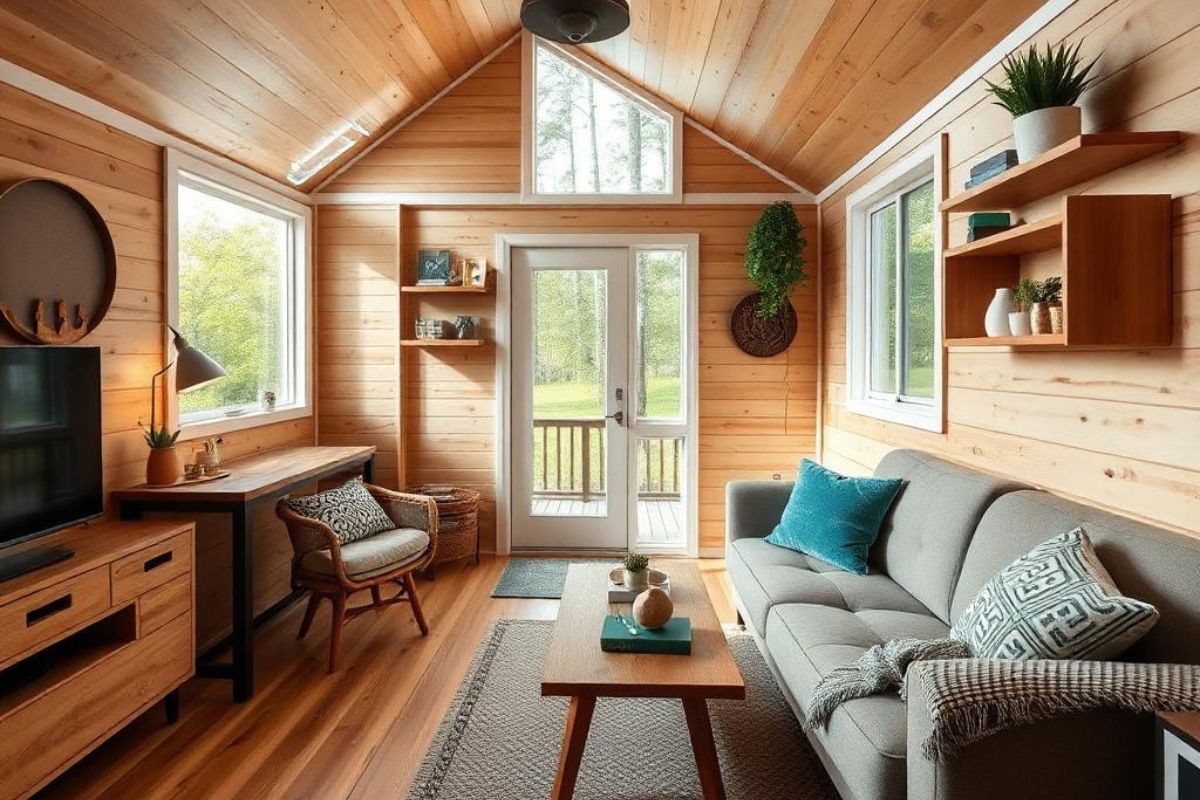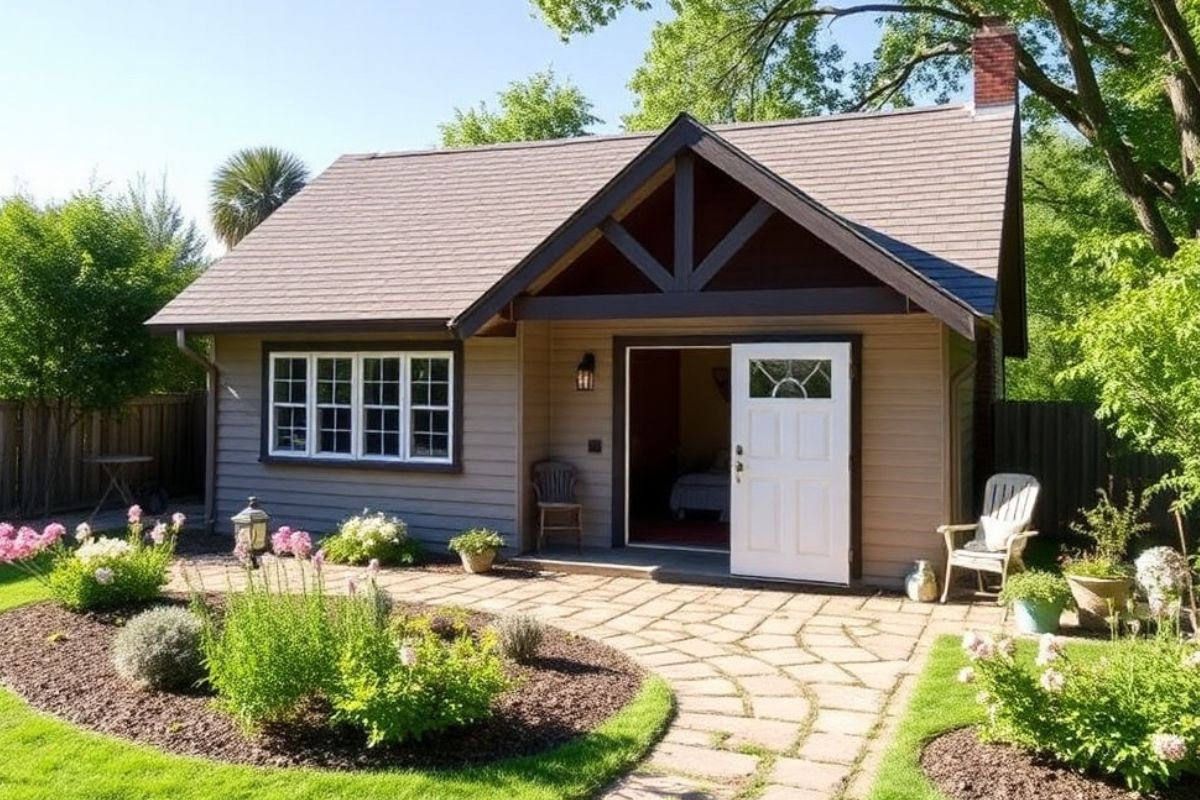When you're dealing with 200 square feet instead of 2,000, walls can't just be pretty—they have to pull their weight. Everything you hang needs to justify the space it takes up.
Most people ignore the upper half of their walls. That's a mistake in a tiny house. Hang things at different levels instead of keeping everything at eye level. Your ceiling will look higher, and the room won't feel so compressed.
Floating Shelves
Regular bookcases eat up floor space you can't afford to lose. Floating shelves give you storage without the footprint. Put them in your kitchen for plates and spice jars you grab every day. In the living area, they'll hold books, a couple of plants, maybe a few things that actually matter to you.
Look for spots you normally wouldn't consider. That gap above your doorway? Perfect for a shelf. Corners that feel useless? Also perfect. Don't line them up like you're organizing a warehouse. Stagger them instead—it looks better. When planning your layout, refer to our tiny house floor plans to identify optimal wall space before installing permanent fixtures.
Here's something that works consistently: group three or five items together instead of two or four. There's something about odd numbers that looks right. And don't pack every shelf completely full. Some empty space keeps things from looking cramped.

Wall Items That Do Double Duty
Murphy desks fold up and look like wall art when you're not using them. Cover a magnetic board with fabric and you've got decoration that also holds notes and photos. A pegboard painted in a good color can organize your jewelry or kitchen tools while looking intentional.
Chalkboards or whiteboards in frames give you a surface you can change whenever you want. Grocery lists one week, a quote you like the next. It keeps things from getting stale without buying new stuff.
Custom Wall Art That Reflects You
Generic prints won't cut it when every square foot counts. Custom wall art lets you turn your own photos, meaningful quotes, or designs into pieces sized exactly for your space. Whether it's a canvas print above your Murphy bed or a metal print in your compact kitchen, personalized artwork makes a tiny house feel distinctly yours rather than just small.
According to Apartment Therapy, personalization is key in compact living—it transforms limitation into intention. The difference between cramped and cozy often comes down to whether your space tells your story.
Lights Mounted on Walls
Sconces light up a room while looking good. Put them next to mirrors or artwork to balance things out. String lights or LED strips can outline doorways or shelves without covering much wall surface. For more ideas on maximizing vertical space, check out our guide on tiny house storage solutions.
Knowing When to Stop
The biggest mistake is covering every inch of wall. Empty space isn't wasted—it gives your eyes somewhere to rest. A few good pieces beat a crowded wall every time.
Check your walls every couple months. If something stopped working or you just don't like it anymore, take it down. Rotating things seasonally keeps your space interesting without opening your wallet.

Paint Color Decisions
Light colors reflect more light. That's just how light works, and it makes rooms feel more open. Accent walls work when you've got architectural details worth highlighting or when you need to visually divide an open space into separate zones.
Dark colors get dismissed for small spaces, but that's shortsighted. A deep navy or forest green can actually make a room feel more substantial and intentional instead of apologetically small. As The Spruce notes in their small space design guides, strategic use of darker hues can add depth and sophistication that light colors alone can't achieve.
Ceiling paint matters too—go a shade or two lighter than your walls and you'll add perceived height. Match the ceiling to the walls and you get the opposite effect: more intimate, wrapped-in.
What Actually Matters
Small wall space limits quantity, not character. The constraint forces you to be selective, which usually produces better results anyway. Prioritize items that serve a function beyond decoration. Pick your starting point based on what you need most—maybe that's shelving for actual storage, maybe it's a statement mirror—then add gradually. Quality beats quantity here. A few well-chosen pieces will always outperform a cluttered collection.






Share: